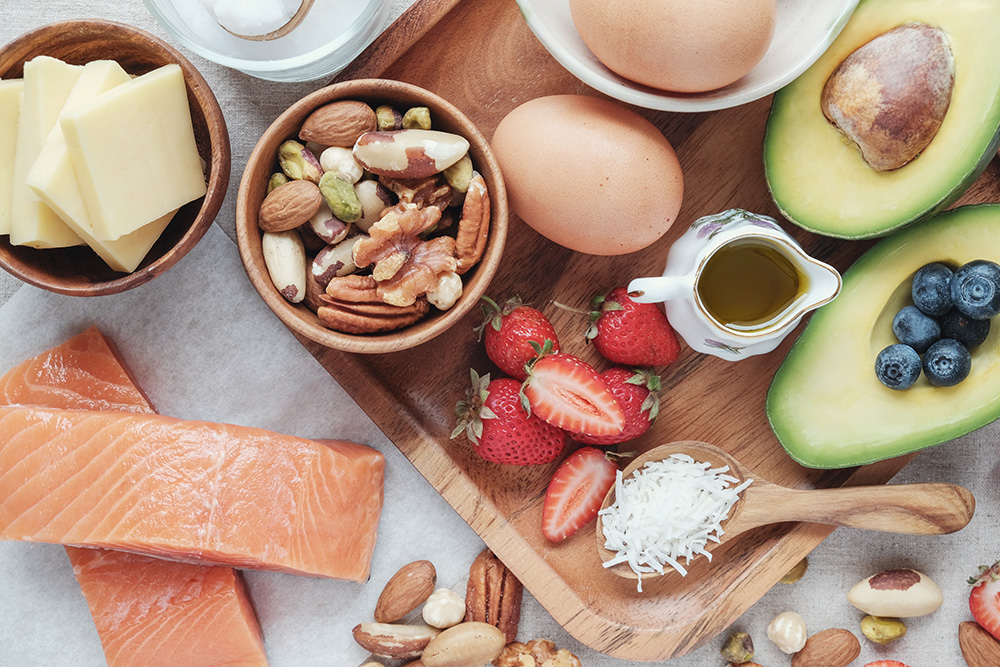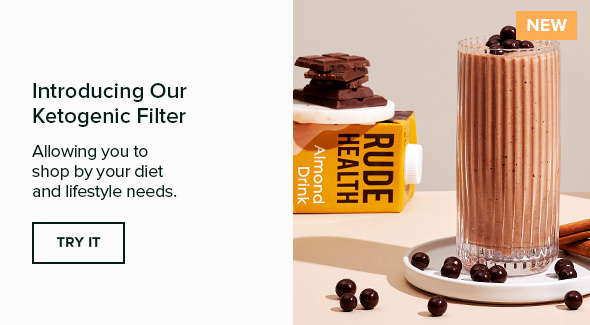
13 Oct The Keto Diet: Getting Started
As we further away from diet culture, and closer towards science-backed nutritional lifestyle changes we’re seeing that people are taking a far more pragmatic approach to their eating lifestyle. “What works for my needs?” What works for my budget?” “What is best for my health?” are the kinds of questions that should encourage your decision-making around settling for the right diet for you. The below is here to give you the stone-cold facts, the science behind the keto diet, to help you discern whether or not you should veto the Keto. Another step to make the transition easier; Faithful to Nature’s new Keto Shop will guide you through your purchasing decisions.
What is Keto Anyway?
The Keto Diet, short for Ketogenic, is a low-carb, high-fat diet. It is mainly used to lose excess body fat without hunger, or for improving type 2 diabetes or metabolic syndrome.
How Does it Work?
When you eat significantly less of carbs, you go into a state of ketosis, which means that your body is beginning to burn fat for fuel. In ketosis, your liver turns fat into small energy molecules called ketones, which your brain and muscles use for energy.
As with all strict dietary conditions there is never going to be a one-size-fits-all scenario, it therefore goes without saying that while the keto diet has proven beneficial for many there is still, of course, controversy. The biggest potential danger at this point in time is around pre-existing medications where doses may need to be adapted to suit the dietary specifications. Like with any significant life changes, when it comes to your health, it is always best to discuss your own personal experience with your medical doctor.
What To Eat?
In order for your body to reach this state of Ketosis the main rule of the Keto diet would be to avoid eating too many carbs. In an ideal world you would need to keep your carb intake under 20 grams a day, although 50 grams is a good benchmark.
In order to keep abreast of your intake you would need to count carbs, however finding and following a reputable source with foods ideal for a keto diet will be able to guide you without counting.
As food is the trickiest part of all this, we thought we’d put together a detailed list below of what you can eat under the keto guidelines. For carb listings per item (cooked or uncooked) it’s best to consult a dietician.
Keto-friendly foods:
Vegetables
| Dark Leafy Greens | Spinach | Aubergine | Cauliflower | Green Pepper |
| Avocado | Broccoli | Cabbage | Lettuce | Kale |
| Asparagus | Green Beans | Brussels Sprouts | Celery | Cucumber |
| Baby Marrow | Olives | Zucchini |
Seeds + Nuts
All nut butters are a great source of protein, shop natural without added sugars.
Low carb, high fat.
Medium carb, high fat:
High carb:
Fruits
| Lemons + Limes | Raspberries | Blackberries | Coconuts | Strawberries |
| Melon |
Meat + Meat Substitutes
| Beef | Game | Lamb | Pork | Chicken |
| Sausages + Wors | Tempeh | Tofu (extra firm) | Eggs |
Fish + Seafood
| All Green List fish | Anchovies | Crab Meat | Prawn | Squid |
| Mussels | Oysters |
Dairy:
Cheese, butter, yogurt and cream can all be part of a keto diet. Avoid anything that is flavoured and low-fat yogurt – this is where the added sugars comes in.
Oils + Sauces:
Cook and dress your foods with oils. Top your meat or veggies with cheesy, creamy sauces. Remember to remain vigilant of your fat intake – and opt for reasonable amounts to enhance what you’re eating.
| Mustard | Mayonnaise | Soy / Tamari Sauce | Salt | Aioli |
| Vinegar | Hot Sauce (natural, no added sugar) | Cream Cheese (not low fat) | Pepper |
Snacks
Get creative (and find more inspiration here);
| Cheese Boards | Charcuterie Boards | Olives | Veggies (carrots, celery, tomato, cucumber) dipped in cream cheese + guacamole | Roasted Nuts + Seeds |
| Nut Butters on celery sticks + cucumber pieces |
What To Drink?
| Sparkling + Natural Water | Black Coffee | Plain tea + Rooibos (no added sugar) | Coconut water | Unsweetened Plant-based Milks |
| Light Beer | Whiskey | Neat Brandy | Vodka + Soda | Tequila |
| Champagne + MCC | Red + White Wine |
Remember that everything has a certain calorie count applied to it, so the deeper you want to go into your keto journey the more research you can do into this. Luckily, you don’t have to cut alcohol from your diet, but it does come with a few stipulations;
- Alcohol contains empty calories and as your inhibitions are lowered it may cause you to overeat.
- Alcohol also turns off your body’s ability to burn fat.
- You may also get drunk faster in keto, and experience a worse hangover, since your body is not running on carbs anymore.
A last note about The Keto Diet and you; it’s important that you know exactly what your body needs when entering into any dietary change, if you’re even a little bit unsure then consult an expert.




No Comments